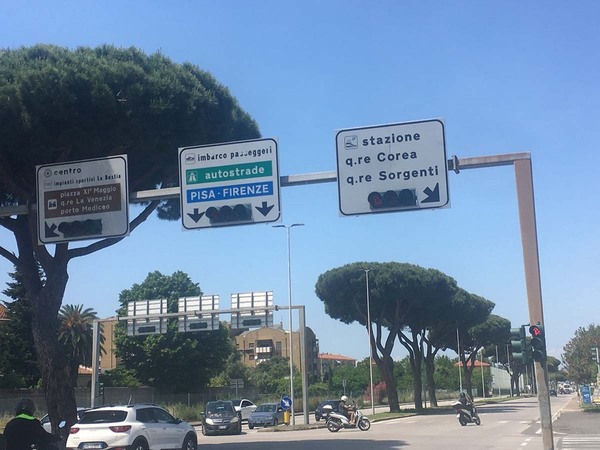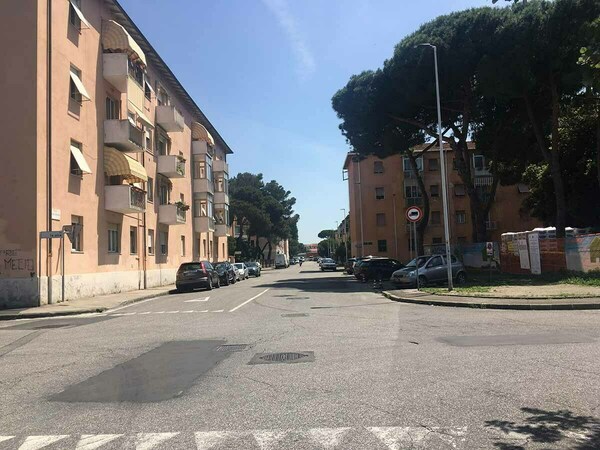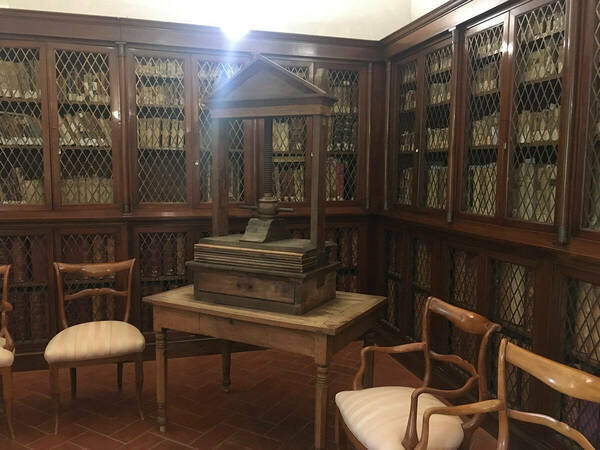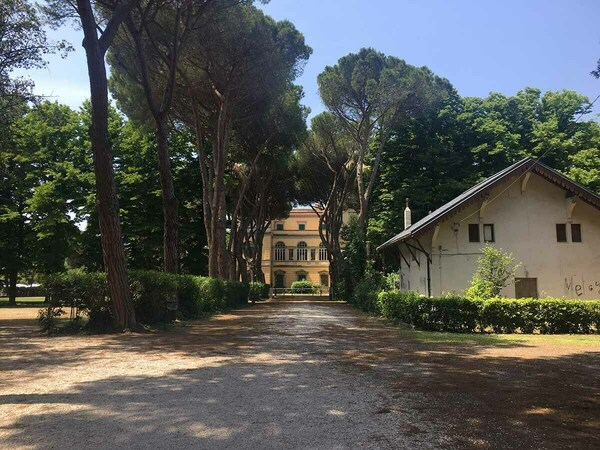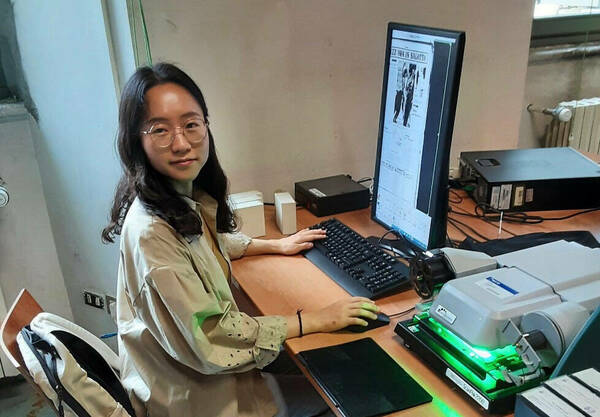
Inha Park recently completed her first year as a Ph.D. student in Italian studies at the University of Notre Dame. She holds an M.A. in comparative literature from Seoul National University and earned her B.A. majoring in Italian at Busan University of Foreign Studies. During the summer of 2023, she traveled to Italy with a research grant from the Nanovic Institute and the Institute for Scholarship in the Liberal Arts. This research is part of her wider project, exploring the ways in which Italians, from ordinary working-class people to artists and intellectuals, have represented and recounted the Korean War from their unique perspectives.
This summer, I embarked on a journey to explore various northern cities in Italy, including Milan, Cremona, and Livorno, to investigate the Cold War connections between Italy and Korea, specifically in the peripheral regions of Milan and Livorno known as Corea ("Korea" in Italian). To my surprise, I found that Corea districts are scattered throughout Italy!
The primary objective of my research project was to examine how Italy, as both center and periphery, provides a unique vantage point from which to reconsider the relationship between Europe and Asia by investigating the many ways in which Italy relates to the farthest part of the world from it (what historically Europeans have termed the “Far East”). My project explores the surprising and understudied existence of peripheries in major Italian cities named Corea ("Korea,” in Italian). Despite their name, Corea districts do not directly relate to the Korean origin of the migrant populations residing in these areas. Instead, they shed light on Italy’s fraught national identity during the Cold War era. Given my scheduled archival research in Rome in June, known as the Rome Archive Seminar, which granted me access to a multitude of archives and libraries in Rome, I took the opportunity to conduct pre-Rome Seminar research in several local archives situated in northern Italian cities that bear significant relevance to the Korean War and the Corea areas.
My research area remains largely unexplored, with limited scholarly attention dedicated to it. While there are existing studies that touch upon the Coree area during Italy's economic boom in the 1950s, none of them have delved into its broader context within the Cold War, particularly the Korean War. These previous works merely mention the Korean War in passing, primarily focusing on the origin of the toponym without extensively contextualizing it within Italy's collective and profound interest in the Korean War. This interest encompasses various facets, such as architecture and artistic representations. Consequently, my goal was to reevaluate the Coree areas in major Italian cities within the framework of Italian depictions and interpretations of the Korean War.
As an archival researcher, my focus was directed toward exploring the direct correlation between Italy's response to the Korean War and the emergence of the Corea areas in Milan and Livorno. Consequently, a significant portion of my work involved examining local newspapers. To my surprise, not only national newspapers but also local ones extensively covered the daily progress of the Korean War, providing intricate details. This widespread coverage attested to Italy's collective interest in the events transpiring in Korea. Italy was so invested in the Korean War that the Corea districts became a convergence of both local and global issues. On one hand, they represented Italy’s internal matter of coping with mass migration from the South to Milan. On the other hand, they embodied the global issue portrayed by the image of war-ravaged Korea during the Korean War.
While I did not uncover a direct link between the newspaper articles and the naming practice in Milan and Livorno, the local news articles offered unexpected keywords and events that proved valuable. For instance, repeated reports on floods in areas near Livorno revealed that these natural disasters forced people to relocate to peripheral areas within the city, which might have later been referred to as Corea. The flood became a keyword that led me to an article in urban studies, which explored the emergence of peripheral areas in postwar Italy, specifically in Livorno. Through this article, I made an intriguing discovery—the naming of Corea districts was not limited to Milan and Livorno alone but extended throughout Italy–from Milan to Avellino in southern Italy and even to Sassari on Sardinia (an island to the west of Naples across the Tyrrhenian Sea). I also noticed that the Corea districts are all connected to the Korean War, each in its distinct way. While the Corea precinct in Milan embodies both the devastation of Korea and the humble living conditions of southern Italian migrants, a neighborhood in Avellino has historical ties to wartime and postwar Italy’s complex relationship with the United States. Here, small apartments were constructed for those injured by the Allies’ bombings during the Second World War, funded by the UNRRA (United Nations Relief and Rehabilitation). Subsequently, the area became known as the Corea district, referencing the contemporary Korean War. Livorno’s case proves even more fascinating as the Corea district shares a border with another peripheral area named Shangai, evoking Asian connections. There are likely further captivating microhistories of Corea districts in various other Italian cities yet to be uncovered, and I look forward to excavating these untold stories.
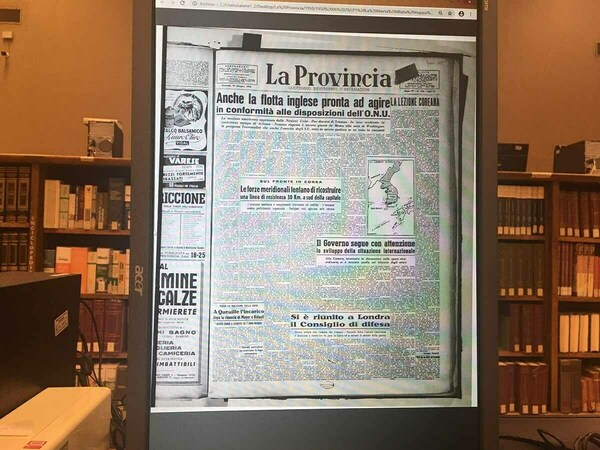
Furthermore, delving into local newspapers provided me with a broader context of the Korean War's impact on Italy. The front pages of daily local newspapers frequently juxtaposed reports on the Korean War with contemporary social, political, and diplomatic concerns of postwar Italy. These concerns encompassed discussions on peace, the ongoing ideological war within Italy (known internally as “the Cold War” between the Christian Democrats and the Italian Communist Party), and Italy's colonial history. This realization led me to contemplate the significant role played by the Korean War as a lens through which post-fascist and postwar Italy examined its position within the broader world system of the Cold War. In addition to local newspapers, my research involved consulting films and monographs on communism and Catholicism - two values that flourished in the peripheral areas of Corea in both Milan and Livorno. These materials inspired me to reflect on how these seemingly contrasting values managed to achieve a peculiar reconciliation or compatibility within these areas carrying an Asian name like Corea. This question is just one of many that emerged during my archival research and await further exploration in the future.
Thanks to the generous Nanovic Research Grant, I had the invaluable opportunity to delve into contemporary and local materials, a crucial aspect that significantly broadened my perspective. This research experience has been nothing short of phenomenal, and I cannot express enough gratitude to the Nanovic Institute for its unwavering support throughout this journey.
Originally published by at nanovicnavigator.nd.edu on July 26, 2023.
